After having completed our thriller, it only makes sense to go back and compare with our first project, our preliminary task ("I can't do it! I just can't!")
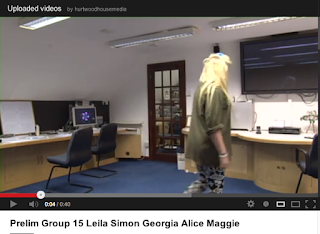
The biggest things that stood out to me as improvements were all of the technical and planning aspects. In our thriller, we were much more committed to readying all our props and costumes, planning out exactly what was to happen and when to film it, and having a much better general knowledge on how to use the camera and editing software.
Our camera work has greatly improved in the sense that we were much more daring and spontaneous in the angles and framing of it. We used handheld shots, car shots, and changed the filters to being much darker and colder. We didn't meticulously white balance and set up the tripod each time, as we did in our first film. This is because we were more experienced and had specific effects in mind when filming.
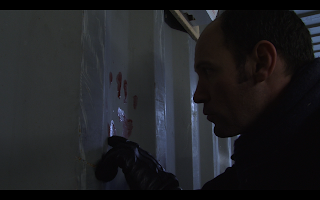
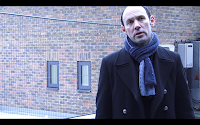
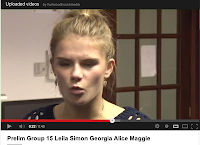
The mise-en-scene of course, was approached much differently in the prelim than in our thriller. In the preliminary, we were assigned a classroom and had to get it done in a shorter amount of time, meaning there was no time to worry about what the set looked like. For Zirgi, we planned it, scouted out the shipping container location, and moved around the paraphernalia inside to create our ideal scenery. I realize that this made a world of difference to the quality and effect of the film. There was a much better dynamic between the actors in our thriller, as we placed them strategically for visual appeal and to create interest. For both, we used a natural set, which I think was effective in making it feel more "real", but obviously the thriller was much more successful in making it exciting, visually appealing and interesting. This was because we chose signifiers (industrial setting, tarpaulin covering body, remote location) to create suspense and tension, classifying it as a thriller.
 |
| Stronger dynamics in the MES |
 |
| Poor dynamics in the MES |
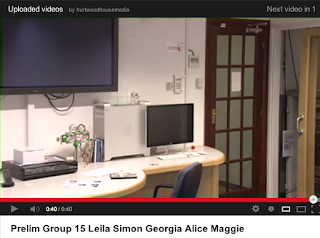 |
| Mise-en-scene |
Editing is another area that we greatly improved. For the prelim, we had just learned how to use the software and were still getting used to it. We didn't take any risks or try anything even moderately elaborate, due to time constraints as well as lack of skill! The shots followed the storyboard almost exactly, with only the close-up of the gun as an extra shot.
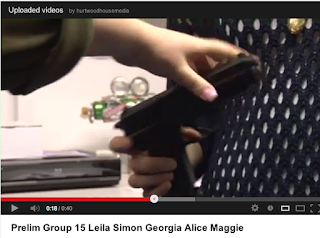 |
| Our "creative" shot |
 |
| The frame that I reduced for a better MES |
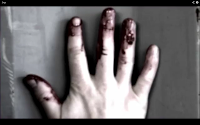 |
| One of our flashbacks |
In our thriller, we used the same software (Final Cut Pro) but had a much better idea of how to get the best out of it. We used after effects to differentiate between the flashback scenes and the present action, making it a black and white wash with slow, stifled frame movement, achieved by speeding up the clip. I cut some of the actual frames to make a more close-up, as the background did not look adequate in one clip. Our editing in the thriller had much better pace than in the prelim. This is because we realised that having a faster pace was more conducive to suspense, which is essential when editing a thriller. An example of a particularly creative bit of editing we did was for the title. As thedetectives shut the car doors, the screen goes black, the title comes up and then we see a shot from inside the container as the detectives open it.
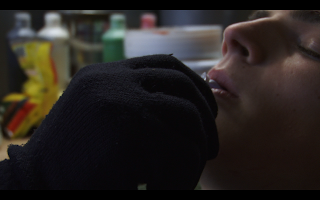
It made a big difference to have the footage in HD, meaning it was clearer when choosing effects and examining how the filters contributed to it. It looked much nicer and more impressive too!
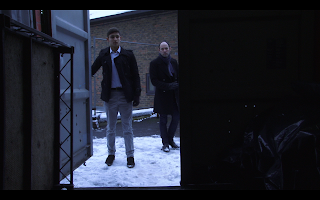 |
| Where "Zirgi" appears before the door opens |
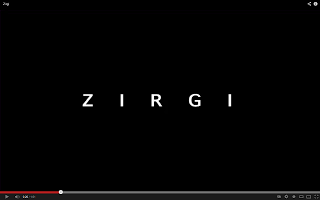 |
| Our title |
The sound was much more effective in our thriller as well. As opposed to leaving the sound natural, the actors reciting a predetermined script (as in the preliminary) we put in many effects, cut and matched sounds to other places in the clip, and added ambient sounds. The prelim sound was also not in high quality, which we learned to achieve on FCP by selecting the sound and making the levels of each side identical to the better side. The ambient sounds we used were mainly wind. We cut the sound so that the detective could be heard speaking before his assistant even opened the secret note from the killer. "Does it mention dancing horses?"
I have always found working in a team to be challenging, mostly because I don't promote my ideas or voice my concerns as much as I should. For the prelim, we were in a much bigger group, meaning everyone had a small task to contribute with. Editing was much more difficult because of the amount of people, but everyone was able to have a turn on the computer. We were much more organised as a group.
For the thriller, we were in a smaller group of three, meaning that we had more responsibilities and that communication was essential and frequent. We worked well on ideas leading up to the filming day, and were diligent in keeping the filming and directing balanced during the day. When it came to editing, we were less balanced, but in the end, everyone was able to contribute, no matter how small.

















No comments:
Post a Comment